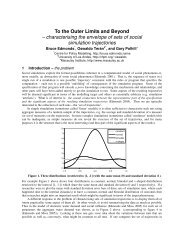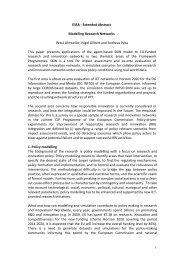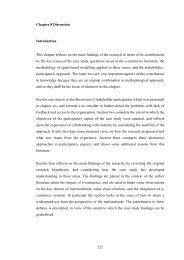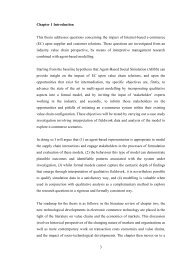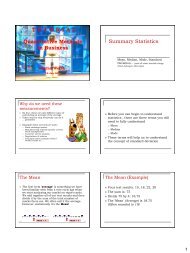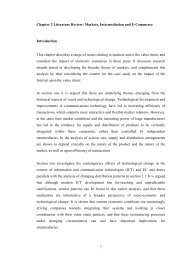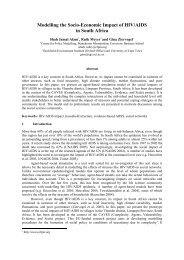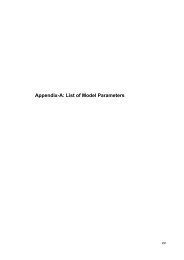1 Agent-Based Modelling Incorporating Qualitative and Quantitative ...
1 Agent-Based Modelling Incorporating Qualitative and Quantitative ...
1 Agent-Based Modelling Incorporating Qualitative and Quantitative ...
Create successful ePaper yourself
Turn your PDF publications into a flip-book with our unique Google optimized e-Paper software.
the interval [71, 100] (list – discount, list). Intermediaries make a profit on their sales because they<br />
buy at a discounted price <strong>and</strong> sell on to customers at a higher ‘selling price’. Each cycle,<br />
intermediaries buy back from the manufacturer only the equivalent number of units to what has<br />
been sold. Moreover, it is assumed that they have an infinite amount of stock to supply their<br />
customers. Intermediaries that are not profitable, having zero profits over the trading cycle, (i.e.<br />
they do not achieve any sales) are removed from the simulation in subsequent cycles.<br />
Customer agents also differ in their dem<strong>and</strong>s: we modelled dem<strong>and</strong> with an exponential function<br />
that, according to one of the respondents, was a good approximation of the company’s markets. We<br />
used the function:<br />
bx<br />
D ? ae<br />
with a = 1, b = 4.605, <strong>and</strong> 1<br />
0 ? x ?<br />
The quantity x is drawn at r<strong>and</strong>om from a uniform distribution over the interval [0,1], giving a<br />
dem<strong>and</strong>, D, ranging from 1 to 100 units. The largest 20% of the customer population, i.e. those with<br />
x ? 0.8 , purchase directly from the manufacturer, <strong>and</strong> the remainder have a small probability to<br />
purchase directly commensurate with their size. We define two kinds of customer dem<strong>and</strong>: nonurgent<br />
stock to be held as inventory at the production site, <strong>and</strong> stock required urgently onsite as<br />
replacement. Orders for urgent products can only be fulfilled by suppliers local to the customer.<br />
Aside from this requirement, customers buy from the highest ‘endorsed’ supplier they can locate.<br />
The model is simulated through discrete time-steps, called trading cycles, in which agents interact<br />
via market transactions, <strong>and</strong> through various communication interactions. In simulation<br />
experiments we used: a large model with grid size of 50 x 50 cells <strong>and</strong> a cardinal range of visibility<br />
of 8 cells, <strong>and</strong> a small model with grid size of 35 x 35 cells <strong>and</strong> a cardinal range of 6 cells. In reality<br />
the company has very many more customers than captured by these figures: we found these<br />
parameters presented a reasonable balance between system scale <strong>and</strong> computational performance.<br />
Communication processes include referrals communication, where the customer receives<br />
information about the existence of alternate potential suppliers, <strong>and</strong> ‘endorsements’ communication<br />
or persuasion processes. We define ‘customer referrals’ as the process where, each trading cycle,<br />
17




